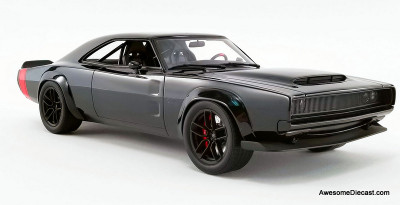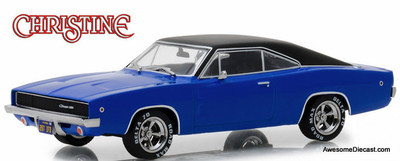Specialty Equipment Market Association (SEMA) of the automobile aftermarket was formed in 1963 by Roy Richter, Ed Iskenderian, Els Lohn, Willie Garner, Bob Hedman, Robert E. Wyman, John Bartlett, Phil Weiand Jr, Al Segal, Dean Moon, and Vic Edelbrock Jr. and now consists of 6,383 companies worldwide, bringing together aftermarket manufacturers, original equipment manufacturers (OEM), media, car dealers, specialty equipment distributors, installers, retailers and restoration specialists.
SEMA provides services for employees of its member companies that include education and professional development, market research, legislative and regulatory advocacy, industry publications, international business development and business-to-business events.
The largest of the SEMA events held annually during the first week of November is the SEMA Show at the Las Vegas Convention Center in Las Vegas, Nevada in conjunction with the Automotive Aftermarket Industry Week. As part of this event, SEMA and other automotive aftermarket trade groups make-up one of the single largest events on the Las Vegas calendar. This auto show is not open to the public. Registration as media, manufacturer, buyer or exhibitor is required.
For a 51-year-old design, the second-generation Dodge Charger that Fiat Chrysler rolled out onto its design showcase floor is remarkably clean and handsome. A black 1968 R/T model from the corporate parent's collection with an original 426 cubic-inch Hemi V-8 (foreshadowing) and four-on-the-floor in front of a bench seat with fold-down armrest, the basic design ranks as arguably the best looking among the generations of this iconic musclecar.
Joe Dehner, chief of Mopar and Ram exterior design, points to the "double-diamond interlocking body design" of the 1968-70 Dodge Charger. But he is not 100-percent pleased with the styling, thanks to the compromises made necessary by the production and design limitations of the day.
"The 14-inch wheels and tires are buried five inches into the body," Dehner notes. The hideaway headlamps look great when hidden away, "but the open lights are not cool." The sideview mirror, "probably off last year's Coronet, the alligator vinyl top … there are a lot of things on here that need updating."
And so, Dodge's contribution to the Specialty Equipment Marketing Association (SEMA) show this year is the SuperCharger, a counterpart to the 1967 Ford Mustang named "Eleanor," which starred in the 2000 remake of "Gone in 60 Seconds."
Dehner's team bought a 1968 Dodge Charger with a 383 cubic-inch V-8 and factory air conditioning off the Internet and turned it into the di grigio gray beauty you see here. That's a Ferrari paint color, by the way—connection to Maranello has its advantages.
To turn the Internet Dodge Charger into the SuperCharger, Dehner's team lowered the height by two inches, added two inches to the overall length by stretching the wheelbase, and widened the car a full four inches. The hood has a new Challenger Demon hood scoop and the '19 Charger headlamps peak out from the vertical-slat grille. There's a splitter underneath to handle the 575-hp boost (based on the gross horsepower rating of the original '68 Charger's 426 Hemi), Viper bucket seats and steering wheel, a rear-seat delete and a full cage.
In back, Dehner's team rerouted the exhaust pipes through the holes where the four "afterburner" taillamps used to be, and tipped them with chrome pieces off the Alfa Romeo Stelvio. There's that beneficial Italian connection, again. New taillamps fill the space atop the taillamps cum exhaust tips, on the rear valance panel.
The '68 Charger's exposed fuel filler cap has been replaced with a new cap with the stylized picture of an elephant, in the style of the Demon's demon.
The elephant on the gas cap is a hint at what's under the hood: a hand-built 426 cubic-inch (7.0L) twin-screw supercharged Hemi V-8 crate engine, which Dodge rates 1,000 horsepower and 950 pound-feet, on 93-octane premium unleaded pump gas. The second-generation Chrysler Hemi V-8, a 426 cubic-inch engine that made its debut in Richard Petty's car in the 1964 Daytona 500, was nicknamed "Hellephant" by Mopar engineers of the early '60s.
Redline on the new Hellephant is a high (for a pushrod) 7,000 rpm, and Mopar's accessories & performance parts chief, Todd Beddick, says race fuel should produce even higher numbers.
"One-thousand horsepower isn't the limit of this engine," Beddick says.
The new 426 Hemi is more than 100 pounds lighter than the 392 Hemi on which it is based, because it replaces the 392's iron block with an aluminum block. Bore is up .032 inches and stroke is up a quarter-inch, to 4.125 inches x 4.0 inches, while the 3.0-liter blower compares with 2.7 liters in the Demon, and produces 15 pounds of boost. The Dodge SuperCharger's six-speed manual is also from the Viper parts bin.
















